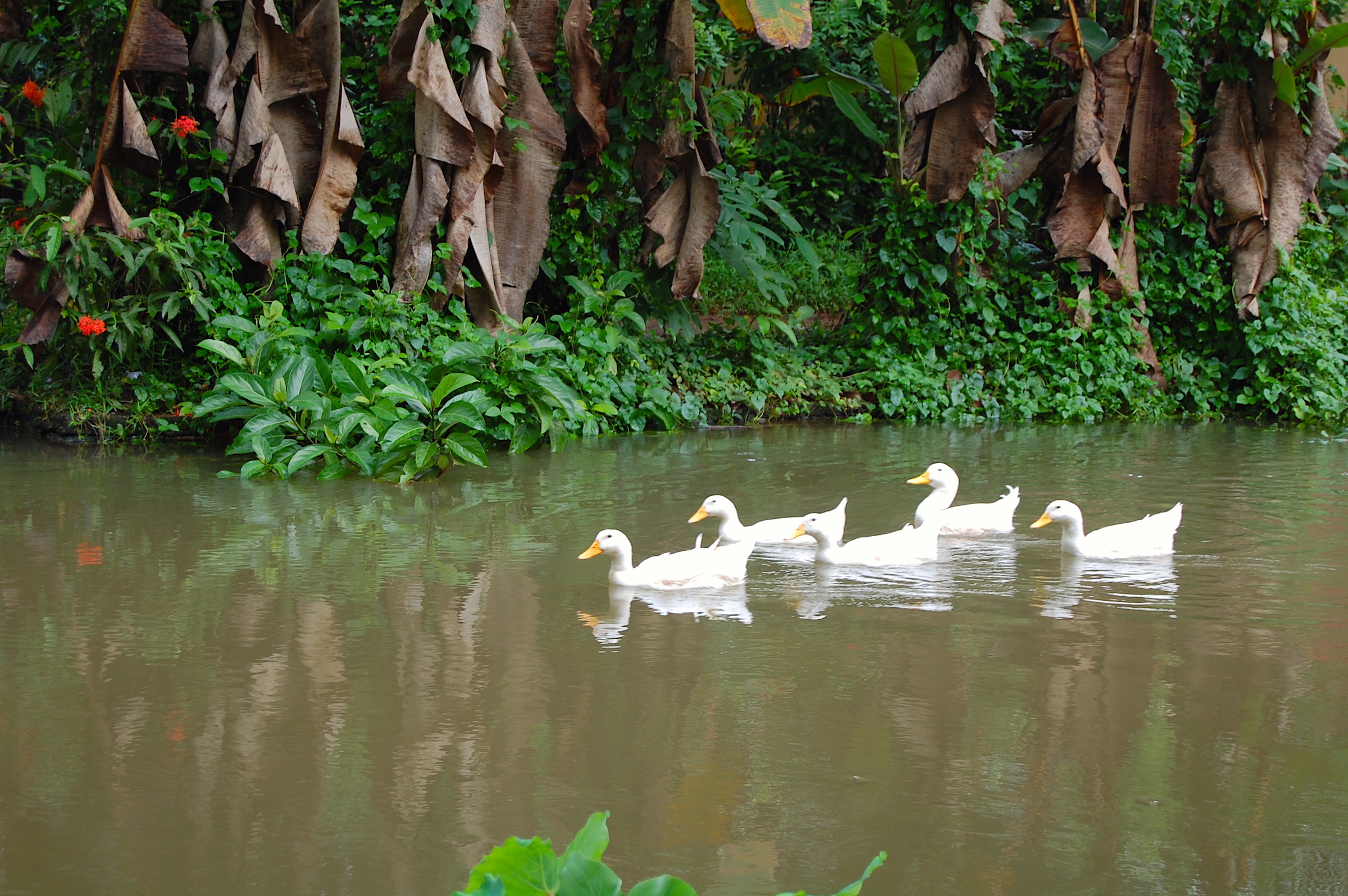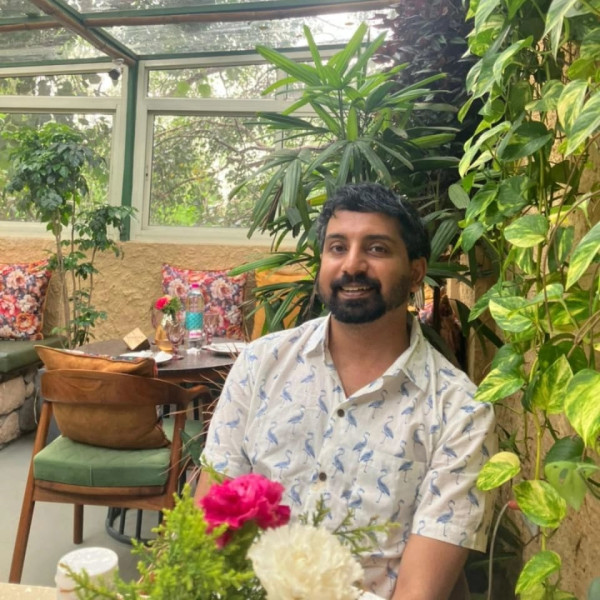 Listen to this article
•
15:34 min
Listen to this article
•
15:34 min
I learnt to swim in the Pamba river that flows opposite our ancestral home in Thalavady, a village in Alappuzha district, Kerala. Mastering the art was a matter of life and death for my cousins and I since our uncles had a unique way of teaching us. They’d lift and chuck us far from the kadavu (riverbank), deep into the river. Youngest and the smallest, I would land farthest, and desperately flail my arms and legs to get back to land. According to them, the measure of how good a swimmer you would become was equivalent to the amount of water you swallowed. Unaware that they said this in jest, I’d gulp copious amounts to remain afloat. A cousin would rescue me only when it was abundantly clear that I was about to drown.
The third-longest river in the state, the Pamba originates at Pulachimalai hill in the Peerumedu plateau in Kerala’s Western Ghats, and drains into Vembanad Lake. Its waters irrigate the rich paddy fields of Kuttanad, also known as the “rice bowl of Kerala”. The picture postcard images of these backwaters fed by the Pamba invites thousands of tourists each year to cruise along on a houseboat. Freshwater from the river meets saline water of the Arabian Sea to create a unique ecosystem, home to rare aquatic, terrestrial and avian lifeforms.

Cover photo: The Pamba is the third-longest river in Kerala. It is seen here flowing through Thalavady village in Alappuzha district. Cover photo: Anirudh Nair
Though it took me months to learn swimming, I quickly managed to grasp the secrets of treading water. With my head above water, I slowly began to observe life in and around the river. Water striders (vellathilaasaan) effortlessly “walked on water”. Orange chromide (pallathi) and giant danios (paral) nibbled at the dead skin on my feet. Indian pond terrapins (kaarama) sunbathed on floating logs. Brahminy kites (krishnapparunth) circled above to swoop for fish.
A common kingfisher (neela ponman/cheria meenkothi) scanned for fish from a bamboo stem bent over the river. A white-breasted kingfisher (ponman/meenkothi chaathan) shared the perch on occasion. If I was exceptionally lucky, a pied kingfisher (pulli meenkothi) would fly low over the entire stretch of the river, emitting a high-pitched ‘treetiti treetiti’ call, that reverberated across both banks. The white-breasted waterhen’s (kulakozhi) loud repetitive quacking served as a twilight prayer alarm for those living along the banks.
Floating vegetation entangling between my legs was a constant source of worry. Far-fetched accounts of otters (neer nai) biting the buttocks of unsuspecting bathers didn’t help assuage my irrational fears.

A checkered keelback (polagan/neerkoli) would often snake by. My heart would race when its head slipped under water, slowing down only after it resurfaced, usually much farther away.
We discovered one day that the voracious piscivore has a weakness for sardine (mathi) heads, which we lined as bait to catch common snakeheads (varaal). My cousins were thrilled when they felt a strong tug, and pulled with all their might, hopeful that they had snagged a large varaal. But our excitement turned to shock when it turned out to be a checkered keelback. The snake wouldn’t let go of the sardine head caught tightly in its jaws. We finally cut the line with a knife, letting the snake win that round of tug-of-war.
Experienced fishermen hooked large fish such as the cobra snakehead (chermeen) and boal (aaatu vala) with line baits. My father tells me about a chermeen caught as a juvenile from the river and raised in a well on a diet of cockroaches, frogs and fish. The half-a-metre-long fish was eventually released back into the river after 15 to 16 years.
Novices like me used an ingenious method to trap small fish such as pallathi, paral and attentive carplets (vayumbu). Promising fresh fish to neighbours, I bartered flour, a coconut shell and a piece of cloth to make a trap that could be secured under water with the weight of a rock. The cloth, stretched on the mouth of the coconut, was slit through the middle. Next, I smeared flour around the slit to lure the fish. Once they enter the shell through the slit, they can’t escape, and were transferred to a bucket of water. After securing a sizeable catch, I would release the fish back into the river, often duping my generous benefactors.
I frequently heard a rustling sound among the dry leaves along the riverbank. If I rushed to inspect the source, I would hear a loud splash moments later. I didn’t see the riverbank enigma until a few years ago when I serendipitously stumbled upon one. Basking in the morning sun on the road to the house, the monitor lizard (udumbu) bolted as soon it heard the gates creak.
The same afternoon, I chanced upon another individual on a mud road beside the river. This one, larger and bolder, held its ground as I approached. It started trotting away when I was too close for comfort, before disappearing into thick bushes along the banks. After eluding me for a quarter of my life, the fabled lizards of my childhood had left me with a lasting memory.
The attic (mach) of our house has been home to generations of Asian palm civets (marapatti). As one settled down for an afternoon siesta, one heard them scurrying about overhead. The noise of them scampering is more pronounced after dusk when they emerge from openings in the roof to head to the palm trees around the house.
My father tells me about his neighbours who had caged what they believed was the elusive Malabar civet (veruk) in the late 1960s. They had captured it from the village and held it in captivity to obtain civet oil, which after dilution was used to make perfumes.
The flying fox (vavvāl) is another mammal that becomes active at dusk, when scores of them fly to their roosting sites silhouetted against a vermillion sky. Large flying foxes, absorbed in feeding on inflorescences of plantains along the banks, would flap away on their giant wings at my sudden intrusion.
The Malayalam names of the birds commonly seen around our house offered insights into their idiosyncrasies. The black drongo or aanaranchi (elephant snatcher) didn’t hesitate to hustle birds larger that itself. The rufous treepie or olenjali (leaf hanger) hung from the leaves of coconut trees to pick insects. The Indian cuckoo or vishu pakshi appeared with its distinctive call around the festival of Vishu in April. The coppersmith barbet or chembukotti (copper beater) was the conductor in chief of the bird call orchestra around the house.

A peculiar belief that death is imminent if one hears the eerie call of a mottled wood owl or kaalan kozhy/kooman (hen of death) at night has led to a saying: kooman aduthu karanjal akale maranam, which translates to ‘if a mottled wood owl cries nearby, a death is not too far’.
Following a death in the village, a large-billed crow’s appearance to feed on rice at a ceremony held to remember the deceased is considered auspicious. The belief is that the departed soul has come in the form of the large-billed crow or balikkakka to accept the offerings of their kin.
Such tales and encounters during my childhood summer visits to this little serene village along the Pamba triggered my curiosity for the natural world and sparked my love for stories. With its natural beauty still intact, Thalavady continues to beckon me every summer.









